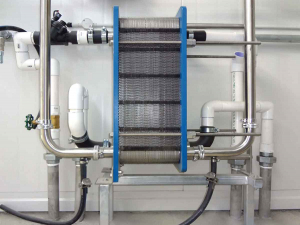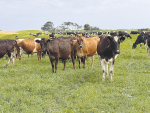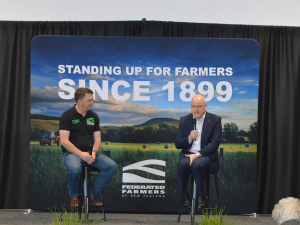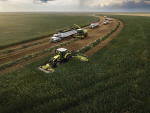Milk cooling affects milk quality. The faster the milk is cooled after milking, the better its quality when it is collected from the farm.
Choosing the right cooling system for your farm means:
• Lower energy costs
• Milk cooling accounts for about 30% of the total energy costs of operating a dairy: energy demand and farm dairy operating costs can be reduced using different options that involve heat recovery from your cooling system.
• Less risk of penalties due to milk temperature
• Raw milk grows bacteria rapidly above 7°C. Meeting the new milk cooling standards, which took effect for all farms on June 1, 2018, may mean changes are required for your system.
Plate heat exchangers (PHE) are a highly cost-effective way to cool milk.
A PHE consists of a series of very thin stainless steel plates. Water flows along one side of each plate while milk flows along the other. Heat is transferred from the milk to the water via the plate. The cooling capacity of a plate cooler is adjusted by adding or subtracting plates.
The easiest way to check the effectiveness of your plate cooler is to compare the difference in temperature between the incoming cooling water and the milk leaving the plate cooler.
An efficient PHE should cool milk to within 2°C of the water temperature before it enters the PHE. For example, if the temperature of the incoming cooling water is 14°C, the temperature of the milk exiting the plate cooler should be about 16°C.
One simple way to check this is to use a PVC strip thermometer. These thermometers have a paper backing which is peeled off and stuck directly onto a clean, dry metal pipe.
PVC therometer usage
1. Locate the water inlet pipe and the milk outlet pipes where they enter and leave the plate cooler, respectively.
2. Find a location for the thermometer that allows it to wrap around the outside of the water inlet pipe. It must be placed on a metal pipe so you may need to move the rubber hose a little to make enough room.
A piece of electrician’s or gaffer tape on each end of the strip can help you with initial positioning. Rotate the thermometer to ensure the temperature range you expect at the pipe is visible. Repeat the process by applying another thermometer strip to the milk outlet pipe.
3. The temperature blocks light up, with the brightest one being the temperature of the pipe. At the next milking, check to see if the required temperature range is visible.
4. Remove the tape on the thermometer strips and once the pipes are clean and dry, remove the paper backing and stick the strip thermometers permanently to their respective pipes.
5. Check the two temperatures during peak milk flow from the milk pump. If there is more than 3°C of difference there is room for the plate cooler’s performance to be improved. In this situation consider checking the water and milk flow rates through the plate cooler.











